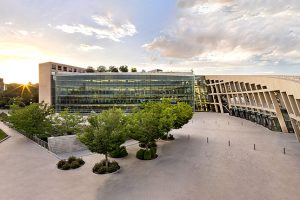I didn’t grow up with my parents reading me books but I still grew up listening to stories. I know that some people may get tired of listening to their parents’ stories about “back in the old days…” because many times a lecture follows. But I was always interested in that first part and sometimes it didn’t even come with a lecture. Sometimes it was just a story to share. One of my sisters and I love listening to stories about our parents’ youth, especially because our parents moved almost 1,500 miles from their home.


We particularly loved listening to our dad’s stories because they all feel so dramatic and intense: having to work since he was eight years old, dreaming about his grandmother saying goodbye to him after her passing, sleeping in a trailer home that was haunted, and many more! And our mom’s stories always made us laugh with her shenanigans as a youth. Why wouldn’t I want to listen to their stories? Not only were these stories entertaining, it helped my sister and me understand them more as people and not just Mom and Dad. That is the power of stories: understanding others.
Which is why what StoryCorps has done is so important. I have actually used it myself for a class while in undergrad to interview my mom about how she identifies and it was a fun way to get to more about that aspect of her life. While I only shared this with the professor, I appreciate that StoryCorps has created an app with the option to share stories to social media or to add stories to their online archive. It is also moving to see that they have worked with public libraries (Eberhard, 2018). The Human Library goes a step further by having in-person interactions with people within their own community.
“The public library shares the community with itself.” (Wentz, 2013)
The implementing of StoryCorps or a Human Library is a wonderful way to bring a community together and provide more understanding of one another.
Stories do not always have to come from books – they are everywhere. We just have to be willing to listen.
References
Eberhart, G. M. (2018, February 10). Sharing people’s stories: StoryCorps partners with public libraries. American Libraries. https://americanlibrariesmagazine.org/blogs/the-scoop/sharing-peoples-stories/
Wentz, E. (2013, April 2016). The human library: Sharing the community with itself. Public Libraries Online. https://publiclibrariesonline.org/2013/04/human_librar/



